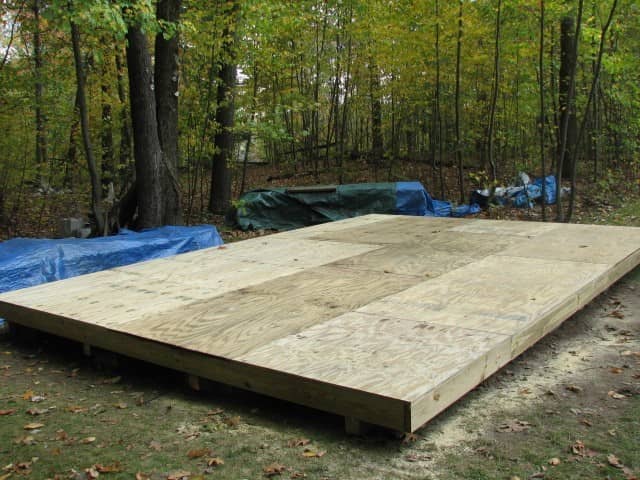
Pressure treated plywood is an excellent material to work with if you’re looking for a durable, affordable option. It’s most commonly used where strength and durability are essential, such as in construction or industrial applications.
Different pressure-treated plywood types are available with differing strength ratings and applications.
Many people use pressure-treated plywood to build decks or other outdoor spaces because it is durable, weather-resistant, and can be stained for a beautiful finish.
However, there are some precautions you should take when working with pressure-treated plywood, as it can be toxic if it is exposed to moisture. Here is a complete guide to working with pressure-treated plywood:
Ultimate Guide How To Work With Pressure Treated Plywood
1. What is pressure-treated plywood?
Pressure treated plywood is a type of wood that has been pressure-treated to make it resistant to rot and decay.
It is widely used in construction projects, outdoor furniture, and other outdoor applications. It is frequently used in flooring and decking because of its durability.
2. Why Use Pressure Treated Plywood?
Although many other options are available for building a patio deck, many people work with pressure-treated plywood because it is durable and weather-resistant.
It is also less expensive than many other materials on the market. It is easy to stain and work with, requiring minimal preparation before installing it. It can be painted, sealed, or even left unfinished for natural beauty.
3. Types of Pressure Treated Plywood
There are different varieties of pressure-treated plywood that can be used for various purposes. These varieties vary in strength, water resistance, and resistance to insects and mold.
Common types of pressure-treated plywood include AC4(AC5), AC2(AC3), TC2(TC3), and AC3 (AC4). AC4 is the strongest variety that is available.
AC5 is the most water-resistant variety. TC2 and TC3 are the least water-resistant varieties. The thicker the board, the more durable it will be and the more expensive.
If you plan to use pressure-treated plywood outdoors in a location prone to rain or moisture, you will probably want to purchase the AC4 variety. For indoor use, the AC2 type will be sufficient.
Safety precautions when using pressure-treated plywood
Be careful when handling or cutting any untreated wood, as it may be contaminated with chemicals that can cause skin irritation and illness.
Also, wear safety glasses and gloves to protect your eyes and prevent injuries. When installing your wood, wear gloves to insulate your hands from chemicals in the air.
Avoid contact with your skin whenever possible. After installing the boards, leave the wood in place for at least two weeks before sealing it to help prevent damage from the sun.
Finally, avoid using pressure-treated plywood around children and pets, as the chemicals may cause them to become sick.
Conclusion
Pressure-treated plywood is a popular material for building decks and other outdoor structures because of its strength and durability.
Be sure to select the appropriate board for your needs to reduce the risk of failure and promote the longevity of your deck or other structure.
If you plan to use pressure-treated plywood indoors, check your local building codes to ensure the material is allowed in your area before making a purchase.
